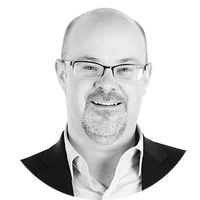How Manchin and Sinema differ — and why it doesn't matter


Joe Biden may be president, Chuck Schumer (D-N.Y.) may be in charge of the Senate, and Nancy Pelosi (D-Calif.) may be leading the House. But, as everyone knows, the most powerful people in Washington this fall are Sens. Joe Manchin of West Virginia and Kyrsten Sinema of Arizona. Thanks to a pair of recent profiles, we now have a better sense of what makes each of them tick — and the core difference between them.
As The Washington Post's reporting shows, Manchin is mainly motivated by a cluster of beliefs that place him at roughly equal distance from the populist right and the progressive left. He's a genuine conservative liberal who opposes the anti-government agenda of Republicans while also insisting Washington should step back if private enterprise can instead step in to help those in need. That's a vision of government more expansive than most Republicans will accept, but much less generous than left-leaning Democrats would prefer. As Matthew Yglesias suggested in a Substack post earlier this week, this makes Manchin a prime candidate to bolt the Democratic Party and form a "Center Party," perhaps with other cross-pressured senators like Montana's Jon Tester (D), Utah's Mitt Romney (R), Alaska's Lisa Murkowski (R), and Maine's Susan Collins (R).
Sinema, on the other hand, appears to be a pure political triangulator. She seems most interested in positioning herself as a Democrat who consistently screws Democrats — with the ultimate goal enhancing her personal power and career. At least, that's how she comes off in Politico's profile. Sinema's model, she claims, is the late Arizona Sen. John McCain (R), who earned a reputation as a truth-talking, straight-shooting maverick for regularly breaking from GOP orthodoxy. But the comparison is unfair to McCain, who was a loyal partisan most of the time and only occasionally caused problems for his caucus. Sinema, by contrast, appears to delight in gumming up the works, perhaps for its own sake — or for the sake of keeping herself in the spotlight.
The Week
Escape your echo chamber. Get the facts behind the news, plus analysis from multiple perspectives.

Sign up for The Week's Free Newsletters
From our morning news briefing to a weekly Good News Newsletter, get the best of The Week delivered directly to your inbox.
From our morning news briefing to a weekly Good News Newsletter, get the best of The Week delivered directly to your inbox.
That contrast might make Manchin sound more admirable, but in the end it doesn't really matter. Until the Democrats can expand their millimeter-wide majorities in Congress, they have no choice but to bow to the demands of both pols. Their motives may differ, but the result is the same.
CORRECTION: A previous version of this post misstated Sen. Tester's party affiliation. It has been corrected. We regret the error.
A free daily email with the biggest news stories of the day – and the best features from TheWeek.com
Damon Linker is a senior correspondent at TheWeek.com. He is also a former contributing editor at The New Republic and the author of The Theocons and The Religious Test.
-
 How drones have detected a deadly threat to Arctic whales
How drones have detected a deadly threat to Arctic whalesUnder the radar Monitoring the sea in the air
-
 A running list of the US government figures Donald Trump has pardoned
A running list of the US government figures Donald Trump has pardonedin depth Clearing the slate for his favorite elected officials
-
 Ski town strikers fight rising cost of living
Ski town strikers fight rising cost of livingThe Explainer Telluride is the latest ski resort experiencing an instructor strike
-
 Trump considers giving Ukraine a security guarantee
Trump considers giving Ukraine a security guaranteeTalking Points Zelenskyy says it is a requirement for peace. Will Putin go along?
-
 Bari Weiss’ ‘60 Minutes’ scandal is about more than one report
Bari Weiss’ ‘60 Minutes’ scandal is about more than one reportIN THE SPOTLIGHT By blocking an approved segment on a controversial prison holding US deportees in El Salvador, the editor-in-chief of CBS News has become the main story
-
 Democrat files to impeach RFK Jr.
Democrat files to impeach RFK Jr.Speed Read Rep. Haley Stevens filed articles of impeachment against Health and Human Services Secretary Robert F. Kennedy Jr.
-
 Miami elects first Democratic mayor in 28 years
Miami elects first Democratic mayor in 28 yearsSpeed Read Eileen Higgins, Miami’s first woman mayor, focused on affordability and Trump’s immigration crackdown in her campaign
-
 GOP wins tight House race in red Tennessee district
GOP wins tight House race in red Tennessee districtSpeed Read Republicans maintained their advantage in the House
-
 US government shutdown: why the Democrats ‘caved’
US government shutdown: why the Democrats ‘caved’In the Spotlight The recent stalemate in Congress could soon be ‘overshadowed by more enduring public perceptions’
-
 A crowded field of Democrats is filling up the California governor’s race
A crowded field of Democrats is filling up the California governor’s raceIn the Spotlight Over a dozen Democrats have declared their candidacy
-
 Will Chuck Schumer keep his job?
Will Chuck Schumer keep his job?Today's Big Question Democrats are discontented and pointing a finger at the Senate leader
